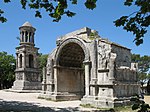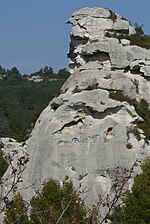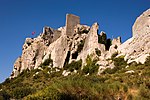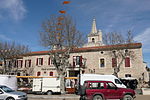Glanum

Glanum (Hellenistic Γλανόν, as well as Glano, Calum, Clano, Clanum, Glanu, Glano) was an ancient and wealthy city which still enjoys a magnificent setting below a gorge on the flanks of the Alpilles mountains. It is located about one kilometre south of the town of Saint-Rémy-de-Provence. Originally a Celto-Ligurian oppidum, it expanded under Greek influence before becoming a Roman city. As it was never built over by settlements after the Roman period but was partly buried by deposits washed from the hills above, much of it was preserved. Many of the impressive buildings have been excavated and can be visited today. It is particularly known for two well-preserved Roman monuments of the 1st century BC, known as "Les Antiques", a mausoleum and a triumphal arch.
Excerpt from the Wikipedia article Glanum (License: CC BY-SA 3.0, Authors, Images).Glanum
D 5, Arles
Geographical coordinates (GPS) Address Phone number Website External links Nearby Places Show on map
Geographical coordinates (GPS)
| Latitude | Longitude |
|---|---|
| N 43.773888888889 ° | E 4.8325 ° |
Address
Site archéologique de Glanum
D 5
13210 Arles
Provence-Alpes-Côte d'Azur, France
Open on Google Maps











